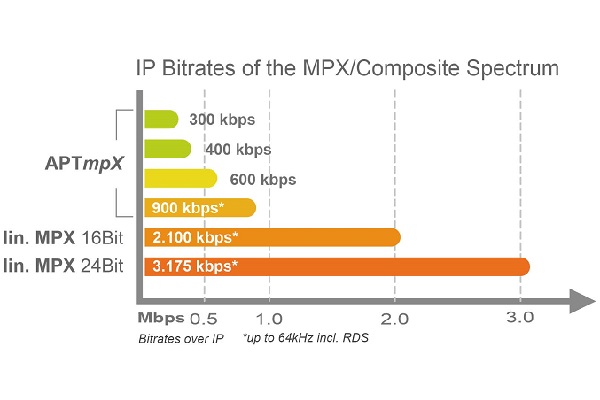The company has introduced three new versions that offer compression levels at 600, 400, and 300 kbps networks bandwidth.
Broadcast products supplier WorldCast Systems has upgraded its APTmpX non-destructive MPX/composite compression algorithm, which it introduced in 2020.
APTmpX significantly lowers the hardware and distribution costs previously associated with standard FM network architecture.
The initial version of APTmpX, launched in October 2020, offered FM broadcasters access to high-quality signal compression for the resulting centralised FM MPX/Composite transmission, solving the difficulty of maintaining both high-quality and cost-effective transmission.
With a compression level of <900 kbps, APTmpX is designed to help broadcasters overcome the difficulty of maintaining both a quality and a cost-effective FM transmission. The company has now optimised APTmpX’s performance even further by introducing three new versions that offer levels of compression at 600, 400 or 300 kbps network bandwidth. This, explains the firm, widens the potential impact of the technology on the industry and means that the composite signal can now directly be transported with non-destructive compression from 600 kbps down to 300 kbps, all at the highest sound quality.
APTmpX offers resilience to packet loss and is highly flexible, being able to interface to analogue or digital MPX sources and receivers; an APTmpX transmission link can be a combination of both. For FM-SFN applications, APTmpX keeps the signal transparency across multiple transmitter sites while it is fully compatible with SynchroStream, the signal synchronicity technology.
Gregory Mercier, Director of Product Marketing, WorldCast Systems, said: “Thanks to its low complexity and easy integration, APTmpX has already proven itself as the ultimate solution to enable a 100% digital transmission chain, bridging the transition from digital studios to digital transmitters. With these new versions, we bring its power to a whole new section of the market, allowing broadcasters in areas of poor bandwidth penetration to deliver stunning audio quality to their audiences no matter what they are listening on.”










































































